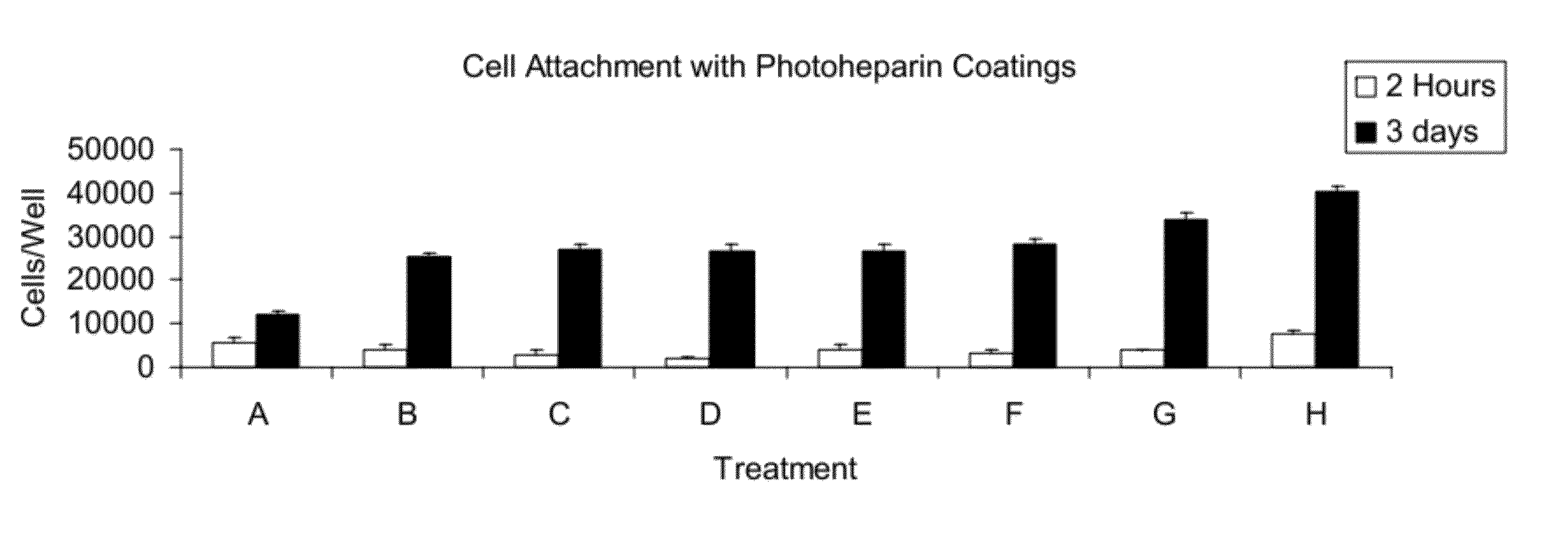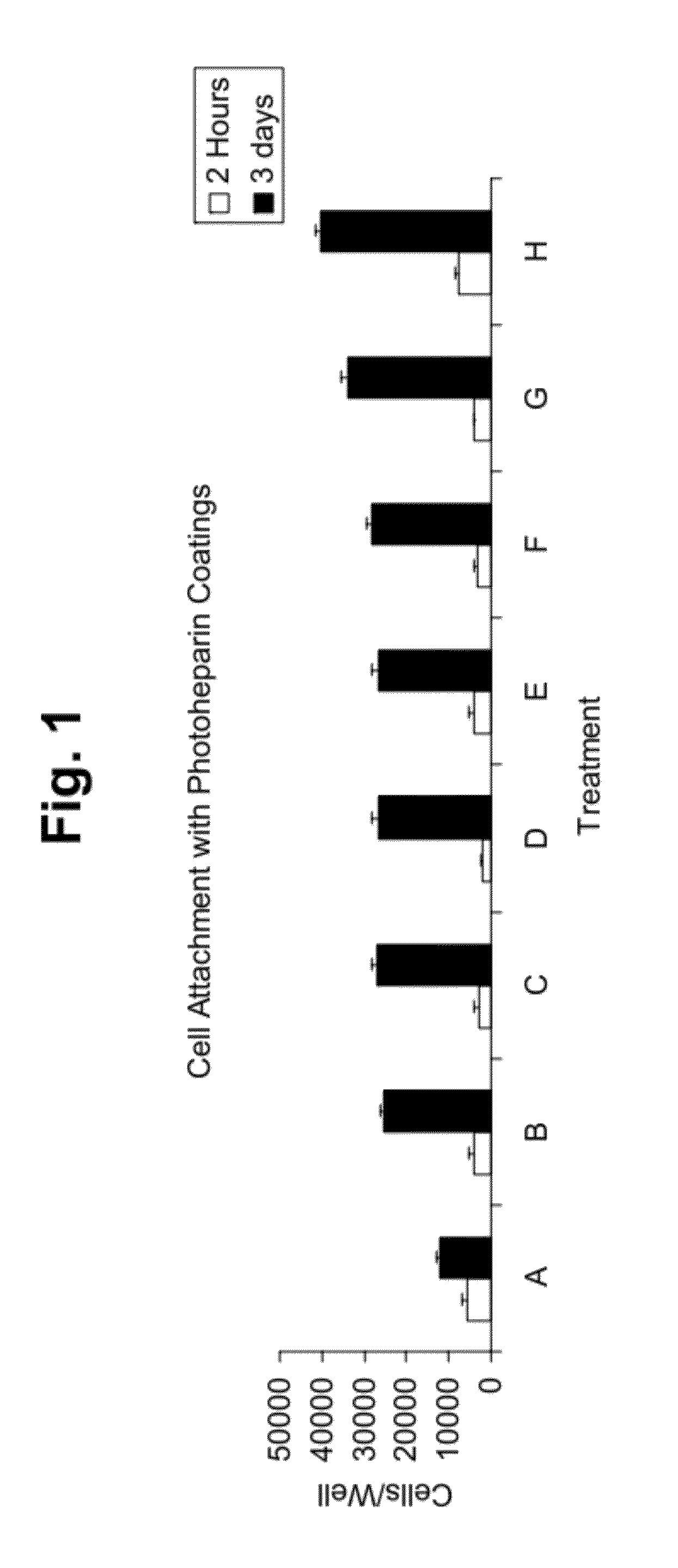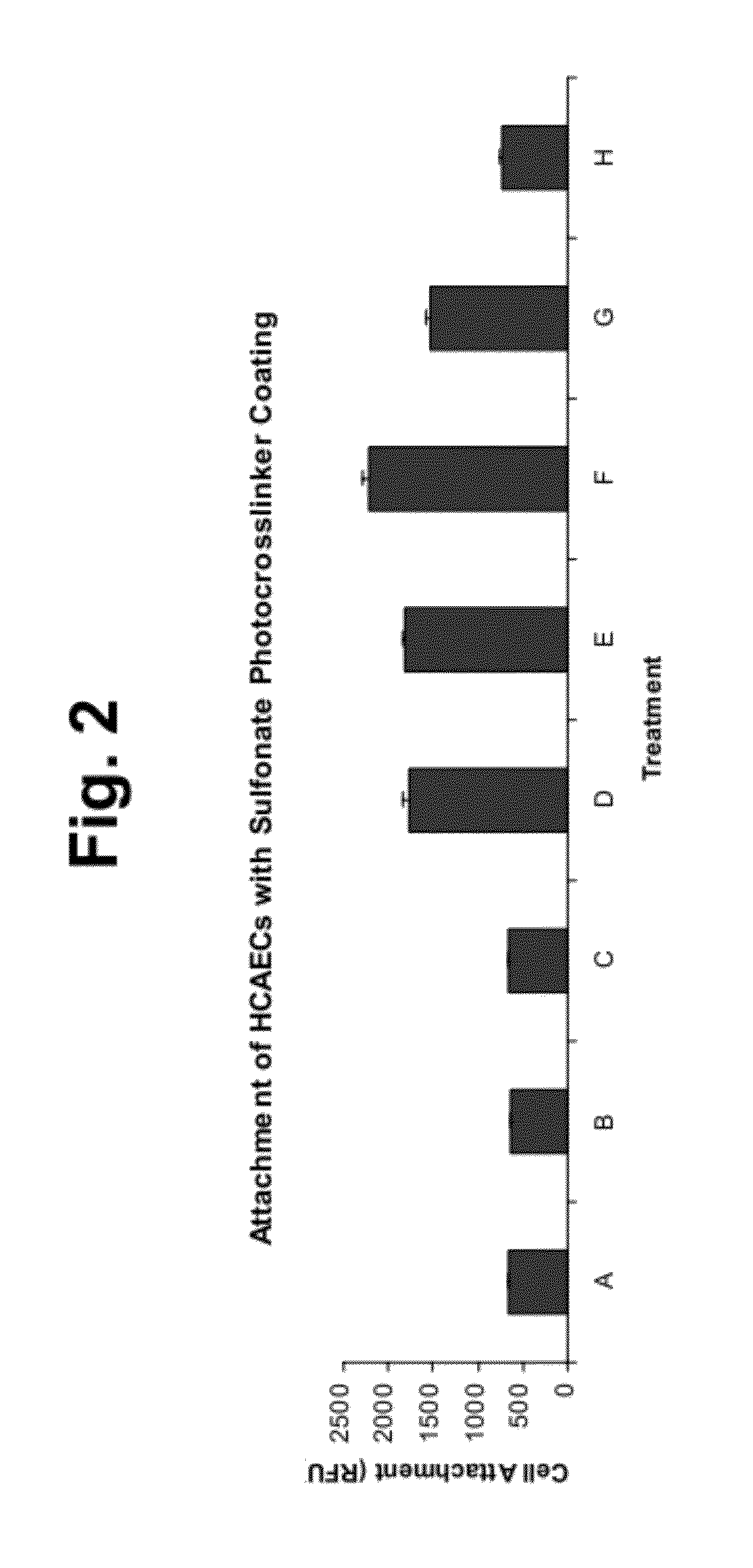Cell attachment coatings and methods
a technology of cell attachment and coating, applied in the field of cell attachment coatings for articles, can solve the problems of ineffective surface, inability to provide the intended function of the surface, and difficulty in the technical process of mimicking the natural function of collagen on a synthetic surface, so as to improve the number of proliferating cells, enhance the attachment of cells, and improve the cell attachment surface
- Summary
- Abstract
- Description
- Claims
- Application Information
AI Technical Summary
Benefits of technology
Problems solved by technology
Method used
Image
Examples
example 1
Synthesis of Photocollagen
[0118]Bovine skin collagen (Semed S Powder) was purchased form Kensey Nash Corporation (Exton, Pa.). This collagen has the proportions of type I collagen (95%) and type III collagen (5%) that are usual for skin-derived collagens. Type 1 collagen was photoderivatized by the addition of (benzoylbenzoic acid)-(epsilon aminocaproic acid)-(N-oxysuccinimide)(BBA-EAC-NOS). BBA-EAC-NOS has a benzophenone photoactivatible group on one end (benzoyl benzoic acid, BBA), a spacer in the middle (epsilon aminocaproic acid, EAC), and an amine reactive thermochemical coupling group on the other end (N-oxysuccinimide, “NOS”). BBA-EAC was synthesized from 4-benzoylbenzoyl chloride and 6-aminocaproic acid. Then the NOS ester of BBA-EAC was synthesized by esterifying the carboxy group of BBA-EAC by carbodiimide activation with N-hydroxysuccimide to yield BBA-EAC-NOS. See U.S. Pat. Nos. 5,744,515 (columns 13 and 14), and 7,220,276. Atelocollagen (Biom'Up, Saint-Priest FRANCE) wa...
example 2
Synthesis of Photoheparin
[0119]Photoderivatized heparin (“photoheparin”) was prepared as described in U.S. Pat. No. 5,563,056 (Swan et al., see Example 4), in which heparin was reacted with benzoyl-benzoyl-epsilon-aminocaproyl-N-oxysuccinimde in dimethylsulfoxide / carbonate buffer. The solvent was evaporated and the photoheparin was dialyzed against water, lyophilized, and then dissolved in water.
example 3
Synthesis of Sulfonate Photocrosslinker
[0120]Low molecular weight compounds that include photoreactive groups and sulfonate groups were used to form the coatings of the invention. Such compounds include 4,5-bis(4-benzoylphenylmethyleneoxy)benzene-1,3-disulfonic acid or salt; 2,5-bis(4-benzoylphenylmethyleneoxy)benzene-1,4-disulfonic acid or salt; 2,5-bis(4-benzoylmethyleneoxy)benzene-1-sulfonic acid or salt; N,N-bis[2-(4-benzoylbenzyloxy)ethyl]-2-aminoethanesulfonic acid or salt, which were prepared according to U.S. Pat. No. 6,278,018.
PUM
| Property | Measurement | Unit |
|---|---|---|
| thickness | aaaaa | aaaaa |
| time points | aaaaa | aaaaa |
| time points | aaaaa | aaaaa |
Abstract
Description
Claims
Application Information
 Login to View More
Login to View More - R&D
- Intellectual Property
- Life Sciences
- Materials
- Tech Scout
- Unparalleled Data Quality
- Higher Quality Content
- 60% Fewer Hallucinations
Browse by: Latest US Patents, China's latest patents, Technical Efficacy Thesaurus, Application Domain, Technology Topic, Popular Technical Reports.
© 2025 PatSnap. All rights reserved.Legal|Privacy policy|Modern Slavery Act Transparency Statement|Sitemap|About US| Contact US: help@patsnap.com



